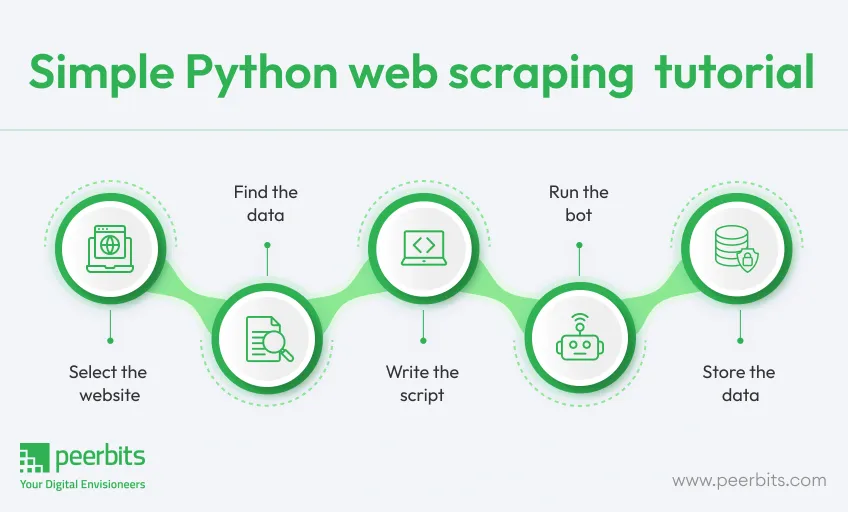
In today’s highly competitive B2B marketing landscape, lead generation is a critical component of any successful strategy. While traditional methods like cold calling or email outreach can still be effective, the digital age has opened up new online screenshot tool avenues for generating high-quality leads. One of the most powerful tools for B2B lead generation is web scraping. This technique allows businesses to gather large volumes of publicly available data from websites, which can be used to build targeted lists of potential clients or prospects. In this article, we will explore how web scraping can be utilized for lead generation and how it can transform your B2B marketing efforts.
1. Understanding Web Scraping for Lead Generation
Web scraping is the process of using software tools or scripts to extract data from websites. When applied to B2B marketing, web scraping can help you gather information about potential leads from a wide variety of online sources, such as company websites, business directories, social media platforms, and industry forums. The types of data that can be scraped include company names, contact details, job titles, and even specific keywords related to the company’s services or products. By automating the process of collecting this information, businesses can generate vast lead lists that are both highly relevant and up-to-date. The key advantage of web scraping for lead generation is that it provides marketers with the ability to target the right audience with precision.
2. Identifying Valuable Sources for B2B Lead Generation
The first step in leveraging web scraping for lead generation is identifying the right sources to scrape. For B2B marketing, the ideal sources include websites that list business information, such as LinkedIn, Crunchbase, and company directories like Yellow Pages or Kompass. Additionally, industry-specific blogs, forums, and even press releases can provide valuable insights into potential leads. Websites like AngelList or TechCrunch are excellent resources for identifying startup companies that might need the products or services your business offers. Scraping these sites allows you to capture company names, key decision-makers, and their contact information, enabling you to build a highly targeted list of prospects. Once these sources are identified, web scraping tools can be configured to extract the relevant data.
3. Using Web Scraping Tools for Data Extraction
There are several web scraping tools available that can make the data extraction process fast and efficient. For instance, tools like Scrapy, BeautifulSoup, and Octoparse allow you to automate the scraping of business-related information from multiple websites. These tools can extract structured data from HTML elements like tables, contact forms, and social media profiles. After configuring the scraping tool to extract relevant data (such as name, job title, email, company name, etc.), you can store the collected information in a CSV file or a database for easy access. Additionally, many scraping tools offer advanced features, such as handling CAPTCHA, rotating IP addresses, and bypassing anti-bot protections, which are important when scraping large volumes of data from websites. By automating this process, marketers save time and reduce the risk of human error.
4. Qualifying Leads Using Web Scraping Data
While web scraping can help gather massive amounts of data, not all leads are created equal. Therefore, once the data is collected, it’s crucial to qualify the leads before incorporating them into your marketing strategy. Qualifying leads involves analyzing the scraped data to ensure that it aligns with your target market and business goals. For example, you may want to focus on scraping companies within a specific industry, company size, or geographical location. Additional filtering can be done based on decision-maker job titles, such as CEOs, marketing managers, or procurement officers. By applying these filters, you can narrow down your lead list to high-quality prospects who are most likely to be interested in your products or services. Using web scraping data for lead generation becomes particularly effective when combined with customer relationship management (CRM) systems or marketing automation tools, which allow you to score and prioritize leads based on their likelihood to convert.
5. Ethical Considerations and Best Practices
While web scraping offers tremendous potential for B2B lead generation, it is essential to follow legal and ethical guidelines to avoid potential issues. Always check the website’s robots.txt file and terms of service to ensure that scraping is allowed, as some websites may explicitly prohibit it. Additionally, consider the privacy and data protection regulations (such as GDPR in the EU) that may apply to the data you collect. It’s crucial to avoid scraping personal data without consent, especially sensitive information like emails or phone numbers, as this can lead to privacy violations and legal consequences. Best practices for ethical web scraping include respecting the target website’s server load by limiting the frequency of requests, using proxy servers or rotating IPs to avoid being blocked, and ensuring that the data you collect is relevant and used responsibly for marketing purposes.
Conclusion
Web scraping is an invaluable tool for B2B lead generation, enabling businesses to collect vast amounts of relevant data that can be used to build targeted lead lists. By automating the data extraction process and identifying the right sources to scrape, businesses can uncover new opportunities, streamline their marketing efforts, and increase the efficiency of their lead generation strategies. However, it’s important to ensure that the data is properly qualified and used in accordance with legal and ethical standards. When done right, web scraping can be a powerful asset for businesses looking to grow their client base and enhance their overall marketing success.
